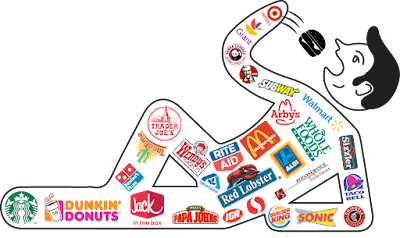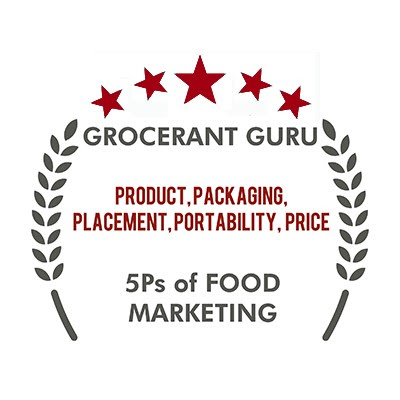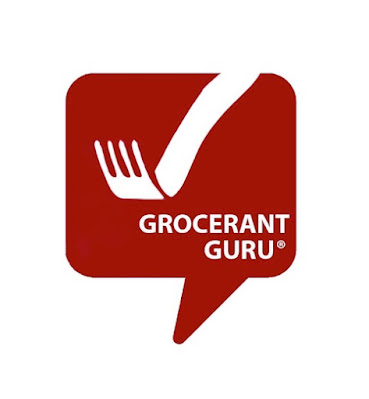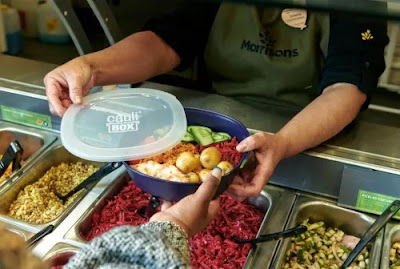What goes around comes around. The parents
of Millennials drove the growth and success of Club stores the ilk of Costco,
BJ’s, and Sam’s
Club according to Steven
Johnson, Grocerant Guru® at Tacoma,
WA based Foodservice Solutions®
who stated, now that Millennials are getting married, buying homes and starting
families they are following in the footsteps of their parents and flocking to
or ordering from Club stores more and more.
Success does leave clues, so after Sam's
Club ran its Super Bowl ad, hundreds of thousands of members joined Scan &
Go. Thus, Sam’s
Club is doubling down on efforts to digitally engage with its members, and
it sees Scan & Go technology as a key component of that strategy. Millennials
were the first generation to be digital natives and Gen Z is the second.
According to Sam’s
club spokesperson, what is helping drive record sales has been the
company’s success in attracting a subset of digitally savvy Millennial members
during the pandemic. These consumers are also strongly represented in what Kathryn
McLay, president and CEO of Sam’s Club, termed their new Super Bowl cohort —
the subset of consumers who became members thanks to the retailer’s wildly
popular Super Bowl Ad.
Get this the ad starring Kevin Hart, the
ad sought to “concierge” consumers through Scan & Go, said McLay during a
Shoptalk keynote in Las Vegas on March 27, as it’s often mistaken for
self-checkout technology. Scan & Go, which the exec described as one of the
highest NPS products in retail, enables members to pay for items through a
mobile app linking their membership information.
How are you evolving your brand with relevance?
Engaging in a digital-first manner is requiring the retailer to think beyond
straightforward journeys. Discovering member resistance toward downloading yet
another app, Sam’s Club instead deployed a digital demo in which consumers can
scan a QR code to trial a single instance of Scan & Go — later downloading
the app if they wish to commit.
McLay continued, “It's just a different
way of playing with the tech to make it more accessible to more members,”… "We’re beginning to play with some of
those concepts, but all of that is based on having this open dialogue with a
member online while they're in an offline club.”
Millennials can be reached at the
intersection both physical and digital experiences. Where Sam’s can then identified offers they
can prompt members with for further engagement, including engagement in
different categories.
McLay also shared insight into how Sam’s
Club is leveraging learnings from its Scan & Ship technology, in which
consumers scan bulky items with their phones for direct-to-home shipping.
Though they initially assumed consumers would ship items immediately after
scanning, they instead found consumers will let them sit in baskets for up to
30 days, later returning to purchase them after doing research.
Also on the horizon: Further
advancement with robotic inventory analysis.
Though Walmart has walked away from the technology in its stores, McLay said it
works well in Sam’s Club in part because of their limited-SKU design with
pallet flows and displays.
Available at nearly all 600 locations,
the camera-affixed automated floor scrubbers scan inventory levels each day.
Not only are the scrubbers “automating a role that’s asking to be automated,”
she said, but they’re also providing an extraordinarily accurate inventory rate
and freeing up associates’ time.
The robots are currently able to scan
both tags on the floor and in the racks, and the company is exploring RFID
technology so it can read the apparel tables as well. How is your brand
evolving? Digital natives continue look for new different experiences including
food discovery. They may not want all of
the old brands, or want to cook from scratch but they do want a shared experience
both physical and digital.
Foodservice Solutions® team is here to help you drive top line sales and bottom-line profits. Are you looking a customer ahead? Visit GrocerantGuru.com for more information or contact: Steve@FoodserviceSolutions.us
































